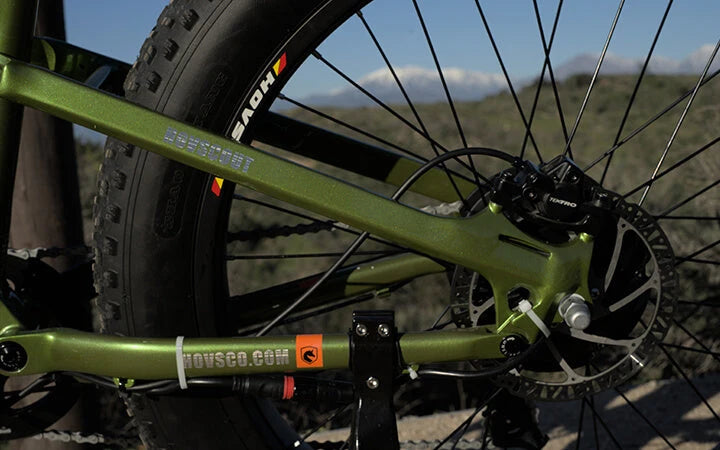
- by hovsco ebikes
Why is Bike Tire Pressure Important and How to Optimize It?
- by hovsco ebikes
Bike tire pressure is crucial for ensuring optimal traction, rolling resistance, rider comfort, puncture resistance, and overall control. Proper inflation balances these factors to provide a smooth, efficient, and safe ride. Overinflation results in a harsh, unstable experience with increased risk of tire bursts, while underinflation increases pedaling effort, reduces handling precision, and risks rim damage. Optimizing tire pressure involves considering rider weight, terrain, and tire volume, starting from the manufacturer’s recommended pressure and adjusting based on riding conditions for the best performance.
Properly inflated tires allow the tire to conform to the ground, increasing the contact patch for better grip on loose or slippery surfaces. This enhanced traction translates to improved stability and control when cornering, braking, or riding over rough terrain, reducing the risk of accidents.
Higher tire pressure on smooth roads decreases rolling resistance, making pedaling easier and allowing for higher speeds with less effort. Conversely, lower pressure increases rolling resistance, requiring more energy to maintain speed, but improves comfort and grip on rough or uneven surfaces.
Lower tire pressure improves comfort by absorbing shocks from bumps and rough terrain, reducing rider fatigue. It also helps prevent "pinch flats," which occur when a tire compresses against the rim on impact. Overinflation can make rides uncomfortable and increases the risk of punctures due to brittleness or rim damage.
Chart Title: Benefits and Drawbacks of Tire Pressure Levels
| Pressure Level | Benefits | Drawbacks |
|---|---|---|
| Proper Pressure | Balanced traction, comfort, and efficiency | Requires adjustment to terrain and weight |
| High Pressure | Lower rolling resistance, faster rides | Harsh ride, reduced traction, risk of blowouts |
| Low Pressure | Increased comfort, better grip | Higher rolling resistance, risk of rim damage |
First, check the tire sidewall for the manufacturer’s recommended pressure range. Adjust pressure upward for smooth pavement to boost speed and reduce effort. Decrease pressure on rough or off-road trails to enhance traction and shock absorption. Consider rider weight: heavier riders require higher pressure for support. Use a quality pressure gauge for accurate measurements and check tire pressure regularly as it naturally decreases over time.
Wider tires have greater air volume, allowing lower pressures for the same support level compared to narrow tires. For example, mountain bike tires run safely at lower PSI (20-40), while road bike tires require higher PSI (80+). Tubeless tires can run at lower pressures without pinch flats, improving grip and comfort.
Select a tire pressure gauge suitable for your tire's pressure range and type. Consider tubeless tire systems for added puncture resistance and the ability to use lower pressures safely. HOVSCO recommends the right balance between tire volume and pressure for your riding conditions to maximize traction, speed, and comfort while extending tire life.
“HOVSCO emphasizes tire pressure as a pivotal factor for rider safety and performance. Proper inflation optimizes tire-ground contact, reduces rolling resistance, and enhances comfort. Riders should adjust pressures for terrain and weight and use accurate gauges for best results. A well-maintained tire setup extends component life and elevates the overall cycling experience.” — HOVSCO Technical Team
Q: How often should I check my bike tire pressure?
A: Before every ride, as tires naturally lose pressure over time.
Q: Can I use the same pressure for all terrains?
A: No, adjust lower for off-road or rough terrain and higher for smooth roads.
Q: What are the risks of overinflating tires?
A: Harsh ride, reduced traction, and increased chance of blowouts.
Q: Is lower tire pressure always better for comfort?
A: Lower pressure improves comfort but can increase rolling resistance and risk rim damage.
Q: How does rider weight affect tire pressure?
A: Heavier riders require higher pressure to properly support weight.
Share:
How to Make Your Daily Journey More Efficient with E-Bikes
Why Compare Juiced RipRacer vs. Hovsco Fat Bike: The HovAlpha?